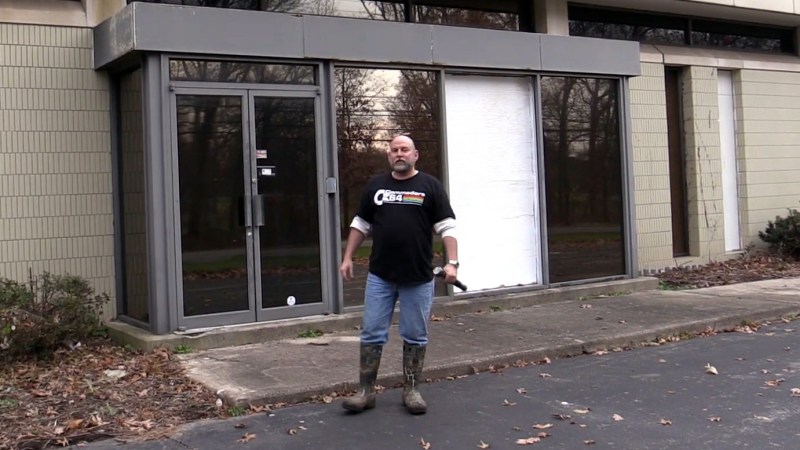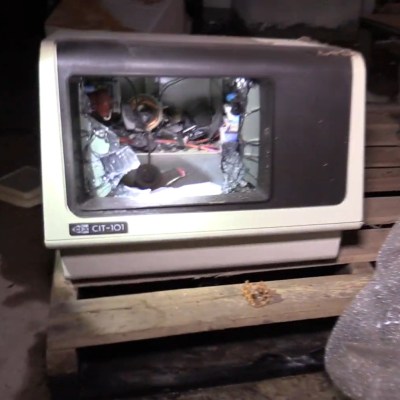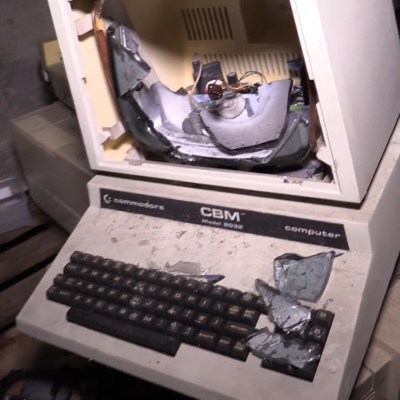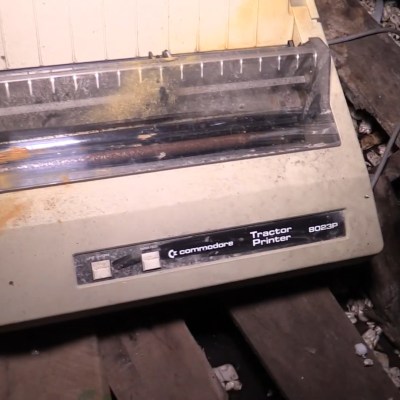I miss my friend Dave DiOrio. He was a chip designer in the 1980’s, which made him one of the true wizards back then. We met my first day when I started at Commodore Business Machines, though my paycheck said MOS Technology on it.
MOS Technology was the birthplace of the venerable 6502 microprocessor, the VIC video chip, and the SID sound chip to name the really famous ones. It also brought us the TED Text Display chip, a whole boatload of Amiga chips, and several other chips that almost did what we wanted them to do.
I worked with magicians whose stock and trade were comprised of half-part quantum tunneling effect and half-part straight-up logic implementation. These magicians weren’t bound by the number of pins available for TTL logic, not like us lowly hardware engineers who had to string 14 and 16 pin chips together to do any real lifting.
Below the spartan offices where the designs were drawn lived the dragon otherwise known as a chip fab, short for integrated circuit fabrication plant. This beast ate sand and made wafers; slices of almost pure silicon in crystalline form with all kinds of intricate things craftily grown on top of them.
Memory Lane: Touring the Abandoned MOS Headquarters
MOS Technology was started in 1969 by Allen Bradley but only became the MOS that I think of when I talk about the good old days when Chuck Peddle and a bunch of cohorts from Motorola, including Bill Mensch, swept in and produced the 6502 microprocessor, which resembled a particular Motorola processor quite a bit, in fact a lot. Lawsuits followed.
Meanwhile the 6502 was taking over several industries as the go-to processor for everything from medical equipment to microwave ovens to home computers. It was while designing home computers that I met Dave while standing above a chip fab. I can still remember the smell of that dragon farting below our feet… its an understatement to say I miss those times.
A couple of years ago I had a chance to return to the old stomping ground as it were, and set foot (legally) inside of MOS headquarters in Norristown, PA — which had become CSG (Commodore Semiconductor Group) by the end. The basement was dirty and flooded and yet we found wafers, one from one of the computers I worked on.
The ground floor was dark and quiet, I stood at the dirty glass entrance doors looking out at a drab street and I quickly moved on before I got hit by some sort of self evident metaphor for life that would have been annoying.

The second floor was where our offices had been. The hot press of design deadlines has long since left this space, now all there is to see is the golf course out the window and a little camp fire someone had made. I got to show this video to Dave, including the view looking out his old office window, and we both smiled at the thought that it was now 35 years later.
Dave has since passed away, the world has one less wizard and as the video shows, the dragon has long since gone quiet.



















Wonder if he’s on the Cloanto discs?
https://www.amigaforever.com/
Back in 1978, my highschool bought a CBM 3032 with a printer and a double diskdrive. Anyone could use it but in reality it was just me and two mates. Aftet a while we even got a key to the school so we could use it after hours. Good times!
Very cool, I’ve restored one two of these CBM 3032’s and have been playing with them a bit, porting a small game from Commodore 64.
Sounds like my highschool. We had three 3016 and one 3032. The 3032 was connected to a dual floppy drive. These computers were accessible for all students who wished to. Not very common in those days.
No it was quite unusual, in particular here in Europe where all the computer gear was about twice as expensive. All thanks to one math teacher who convinced the school board that a computer club with voluntary classes would be a good investment. He was way ahead of the curve.
My high school (in 1981 or so) had 8 or so CBMs in the remedial math classroom. They all had IEEE-488 connectors *stacked* onto to the back of a poor innocent floppy drive. I know the idea was that they would share loading things from the same floppy, but it was just such an absurd sight.
We had a similar setup in my HS ‘computer room’ – several 4032’s tied to a 2040(?) Dual Floppy with those heavy parallel 488 cables.
The particulars escape me now, but I recall that by messing around with ‘secondary addresses’ given to the OPEN command, we could pass strings between the computers (through a buffer in the 2040, presumably) which was great fun, back in the Beginning Times
One more example of lost manufacturing capacity and the wizards that attended the dragon.
The PLA weren’t doing much with missile tech in the 80’s. That would have been the 90’s and the company was Space Systems Loral (SSL). I worked there too. We were told not to talk to reporters. Big scandal for the Clinton administration. No heads rolled for that one and it was a damn shame.
Yup, that increased the capability of their ICBM quite a bit. It was that administration’s policy to help improve Chinese commercial launch technology because it was inconceivable (I like to call it the “Princess Bride Phenomenon”) that it would be militarized.
Thanks Bill! Would love to see more of this video. What were they working on in the basement? (Power tools running in the background). Did they allow you to take the Commodore’s for restoration?
The tapes might have had something interesting.
The chips that were engineered there have left a lasting memory in my mind. I have repaired many a VIC, C64, 128, and AMIGA. The chips were magic, and yes…those wizards are legends. I would have loved to apprentice there and learn the trade more fully. The sad part is that your memories are scarred when you look at what’s now to that of what was then. I look at the QVC building and a tear forms in my eye every time. Thanks for the tour [Bil Herd]. Glad you could reminisce.
73 de KC8KVA
It is an urban myth that commodores can repair themselves. Throw them in a closet for about 5 years, pull it out and fires right up.
Yes that’s wss a good time.
First the KIM-1 and after the 2001.
Have you make video from birthplace?
0:59 those old tricks won’t work on me… :P
Any chance you were able to salvage some of the old computers and those tapes? I’m sure someone would be interested in them. I wouldn’t be surprised if some of it still worked. Seen many a video of people finding Commodore 64s rotting away in a barn. They dust it off, plug it in, and voila!
Apologies, if I’m drifting off the hackaday course here. IMO it’s not the state of any local’s real estate market, isn’t the reason, why so many buildings in the USA sit unused. The reason, there are no dl businesses to put them to use. As this isn’t a place to discuss, why that is, I wont go there. How many who viewed this ; thought spaces? Granted the building has issues be addressed, but a possibility is there.
to some unknown degree, re-occupying and rebuilding such places is not a good idea, based on the environmental pollution already done and existing. abatement and certifying existing materials/land as safe, is morally and legally required. this applies to many sites including simple places such as an old gas station and of course the complex places like malls, offices, homes, and factories.
Some of them are just sitting there because the environmental clean up bill would be multiple millions.
That site has contaminated the groundwater and i doubt it will every be used. There are multiple wells that are trying to clean it up in the area around it. My work is in the same business park.
Amiga the computer for the creatice mind!
There are forever chemicals and lots of chemicals that are poisonous have a residual effect.
5 Pesticides – Department of Health
https://www1.health.gov.au/internet/publications/publishing.nsf/Content/ohp-enhealth-manual-atsi-cnt-l~ohp-enhealth-manual-atsi-cnt-l-ch5~ohp-enhealth-manual-atsi-cnt-l-ch5.5
What are PFAS Chemicals?
https://www.ewg.org/pfaschemicals/what-are-forever-chemicals.html
I bought a concentrate from one of the national hardware stores, attached it to my hose and sprayed for ants. You really have to read the directions and wear the appropriate personal protective equipment. I sprayed and seemed fine but the burns came a few days later.
Some sites require the ground dirt to be scraped to the bedrock and incinerated before it can be used again.
I won’t name the company that leases its land to pay the taxes to keep from having to close.
Some places produce one item to keep from having to close.
Its their exit strategy to keep from having to pay the bill of cleanup; An owner of a large company can live his life, eventually pass on and the problem will be someone else’s because they can produce one item, pay the taxes and not have to close or clean the land.
I remember how Jeff Porcaro, the drummer fro TOTO, died. Same way as you. Except, of course, you survived. ;)
Basically the reason why so many office buildings like this become unused and derelict, is because the infrastructure in the building became obsolete. Imagine, in the 80’s there were no high speed networks, nothing. So there would be no coax ethernet, and for sure no CAT 5 ethernet. Power requirements have increased tenfold (everyone now needs at least one computer and two monitors). Fire safety rules change. All those kinds of things.
It means that if you want to reuse such an old building, you first have to spend a few million to tear out all the old infrastructure, including the office walls (because of fire safety, you’ll need a different layout). then, have to put new office walls back in, and rebuild the whole wiring and everything.
It takes months and many millions.
But then, you’re in an old building with newest of the newest infrastructure. So, still an old building, looking old, and not ‘representative’. So you might never get someone to rent it, because it doesn’t look so nice (e.g. that front door is just extremely bland, even modern supermarkets have nicer entries these days).
So often it’s just not worth renovating. The building will stay for rent for ages, and if nobody is willing to put the money into renovating the insides, the building will stay like that until some government department deems that the building has become too unsafe, or the building goes past it’s projected economic lifespan. It will be torn down, and the owners of the building will break even (but remember that they had a good income during the lifetime of the building ;)).
It’s quite wasteful, in my opinion. Economically viable, but it’s kind of like the throwaway society that we have. We buy something for $30, it breaks before it’s economic end-of-life, and instead of repairing it for $5, we throw it away and buy a new and upgraded one for $40. Basically, it means that we paid $70 for the thing, while we would have payed $35 for it if we had repaired it. AND we would have saved on waste.
Would have saved the CBM and printer. Maybe someone needs the parts at least. Must be a super weak real estate market around there for that property to have remained vacant so long.
I don’t know anything about the real estate market in those parts, but I do know that property is an EPA superfund site due to some underground tanks leaking back in the 70s. Mr. Herd mentions the aeration sprinklers in his story about where he parked the first day. This probably makes the property a bit less than desirable.
100%. Norristown is pretty rough. There are tons of superfund sites in the region and it wasn’t until this video that I finally found out what the building was. I’ve driven past it pretty often the past 15 years.
So sad but cathartic. Thanks for the tour Bill and the incredible legacy that you and everyone at Commodore/MOS have created.
I’ve been in that situation, Bil. Starting my engineering career in a 100 year old railroad control company in Pittsburgh. Our group ushered microprocessors into that world, previously dominated by rooms full of specialty, 5-pound relays nearly a foot high. At the end, we did the unimaginable; designed a truly fail-safe system using microchips. Those relays slowly faded into history. Years later, I watched as a gigantic crane with a wrecking ball, literally beat that 5-story behemoth of building into dust. Heartbreaking. The company had been sold to a foreign concern that no further need for the property. With the death of that business, dozens of supporting businesses died. Restaurants, retail stores, bars and even churches, closed for lack of patrons. Neighborhoods changed, taking on the appearance of post-war Eastern Europe. Crime began to drive all those remaining from the once thriving community. For decades, the rot, has slowly laid waste to our once mighty industries, and neighborhoods, but over the last couple years, there have been green shoots. Businesses starting and growing, ancillary businesses, even some of those that moved away are starting to return. I never thought I would ever see that again. I pray that the blight that laid so many businesses low will never return. I hope the same thing happens to your MOS Technology building. There were workers in there! Hopefully in preparation for a new business to begin, and not just making noise while you were trying to talk.
I like hearing what you have to say Randy. Great to hear that new small ventures are sprouting up and slowly regrowing in places that have essentially been laid to waste by incompetent administrations in years gone by. Thank dear Lord for that!
All we need is a time machine! We got the right space, just turn the clock back a few years! I love the contrast. It’s a pretty average looking building now, probably was average back then too, but Bil says it best when he calls them (people) Wizards and Magicians! Indeed, there were real Dragons there! They weren’t just people. They laid the foundation in every electronic gadget and device in use all around us every day. It’s so sad that people today can’t find the resources to give this place the special attention it truly deserves.
Digitally recreate, or buy the building. Sounds like they’re already doing something.
I’d probably go “You need any of this old junk removed” and at the slightest nod, just absolutely take all I could.
Copy that!
One thing the emulators just cannot do – replicate that original keyboard experience, the feel and the sound. Even if the main board is irrecoverable, save the enclosure and the keeb! You can fake the guts if you have to, but not the outer bits
The kids who learned how to code on the machines designed and built by commodore are today’s wizards. As the world loses wizards from one generation they gain them in the next.
Definitely. I can’t claim Wizard status but Commodore machines were my start in life.
My first encounter with Commodore PET were back in elementary school. I was 6 or 7 and fell in love with my school’s computers. I hated the original 2001’s keyboard it was awkward to use even for a 7 year old.
Sadly they threw it out (wouldn’t let me keep one) and replaced them all with Apple IIes.
Right now I have the relative uncommon PET 9000 with the Waterloo board.
Bill,
Thanks for the time machine. You mentioned Bob Russell. Do you know if this is same person who went to Xebec, then Maxtor, then VeriFone. Think he’s been gone 20 years now. At least he retired, made it to FL and got to drive his convertible
awhile before a heart attack got him. Another great guy….gone….
Sad to see in a way, I bet it bought back a lot of memories for that guy. I still got a lots of Sid chips laying about, keep meaning to sort them out. Thanks for the video.
Said that we cannot ask Dave DiOrio anymore about the internal chip design of TED. Probably he would have remembered some key solutions or tricks inside that I could use at the FPGATED implementation. Now all we have is reverse engineering.
I don’t have pictures of actors or rockstars on the wall but a huge picture of Chuck Peddle.
The older I get the more I seem to travel back in time.
Thumbs up Mr. Breadbaker, I hear you as I feel the same way.
Was that the building where the SID and C64 where created? Wooooo…..
Thanks for the memories. My dad worked for MOS (or at least sub-contracted for them) in the late 70’s doing IC design. We lived right outside of Norristown, PA. Glad he mentioned the Calma Workstations in the video. For the life of me I couldn’t remember the name of those beasts.
What about the found stuff like the magnetic tapes … wouldn’t it be nice to save these, try to collect or extract the data on it?
Over a decade ago I did work removing electrical switchgear from the building. I still have a handful of round discs (sort of mirror like silicon wafer things, some in plastic cases with blue foam) from the basement as well as a few of the amigas I found, oh and I also had possession of a stand up arcade cabinet called Tank but the monitor had been vandalized and the wood warped from years of water damage tried to save the board, controllers and coin door but I’m pretty sure I’ve gotten rid of them a few moves ago. Haven’t watched the video yet, but I made a note of it for later!
I am envious. I shouldn’t be, I know, but I am very envious :)
I learnt to program in machine code on the 6502.
For me it was Basic on a PET, and then machine language on the 6510 in a C64.
Later, I had an internship doing 65816 code for a Nintendo game. They were surprised to find someone with relevant experience. I was equally surprise to HAVE relevant experience. :)
A great CPU, for sure. But I wish Commodore would have used the 6809. Way, way more easy to program in assembly, full featured. Probably the best 8-bit CPU of that time. Also wish Tandy would have made a better machine with it, than that CoCo. ;)
I should probably also mention that the price of the 6809 was very high at that time. And that was its downfall, for sure. It was about $40 in the 1980s, I think. The 6502 was about $8 at the time. Imagine you make 1 million computers, regardless of the processor. You would put $32 million dollars profit straight into your own pocket if you would have used the 6502.
The 6502 was hands down the right choice for the Commodore machines, and they won their popularity because of it. But I do wish it would have been the 6809. :)
Later, Commodore made up for it with the Amiga’s and the 68000. Which was a few leaps ahead again of the 6809. Best 16-bit processor, in my opinion. I wish IBM had chosen the 68000 instead of that moronic 8088.
Could have been a good video if the people shooting it knew how to keep their camera somewhat steady. Looked like they were on a roller coaster.
Thanks for this article and video!
Today I’m a Network Engineer. Growing up with Commodore in our back yard, and still living in the area, my fondest computing memories all involve a Commodore computer. Our first home computer was a VIC-20. Followed by a C=64, C=128, A500, then an A1200. Though the power supply died long ago, the 1200 was only thrown away literally only 2 years ago after I dumped the HDD for use in WinUAE. The programming lessons learned way back on the 64 continue to help me with programming logistics today.
I still enjoy my Commodores. But now it’s mostly playing Archon or Advanced Laser Chess with my 12-year old Son. The same as I did with my Brother when we were young.
Commodore is gone, but never forgotten.
A very similar experience for me too. Back in 1986 I got my first (by then obsolete) Commodore VIC-20 and learned to program assembler and basic on it. Moved on to C-64 and learned even more. Those two machines single handedly helped me build the passion I have today for engineering. I have lived a somewhat blessed life travelling the World working in many places in the industrial electrical industry, providing support for high power and very sophisticated systems, designing hardware and programming firmware as well as high level languages. My roots are in South Africa, which is where I got my first Commodore, so that’s the nature of impact that Commodore had.
My sincerest thanks to the guys of Commodore, Right from Jack Tramiel, through to the the genius engineers that worked for him, the sales team that supported the company etc. It could be said that other computers existed at the time and my experience may have been the same with them, I don’t know, but it was Commodore that gave me this start in life, and for that I am grateful.
Reading about the computers the schools were using in the early ’80s. I first had exposure to computers in ’72 as a non credit course that was taken during study hall. We didn’t have computers, but just the punch card machine that we did our programs on and then they were sent off-site to be run. The results would come back in two days. Not the easiest way to learn programming. Writing out the programs on special paper that had 80 spaces. Fortran 4, that’s what I learned on. Then always the question Stop, End or End, Stop in the deck of control cards. God forbid, you have your program and all the control cards that gets dropped. by accident.
I had the Commodore 64 with the 1541 disk drive; I drove my dad crazy playing games on it like jump man and my favorites The temple of Apsahi and Sword of Fargoal!
I loved Jumpman!! OMG!!
Today I’m a software developer.
But not thanks to Commodore, sorry to say. ;) But I am from slightly before Commodore’s time.
I have Chris Shelton (Nascom designer), and Don French and John Roach (TRS-80), to thank for my roots.
But, ok. I had a Nascom 1. But couldn’t afford a TRS-80 (but learnt to program it at school). So next up was my C64.
Basically, my soul was saved by Commodore due to the excellence of the C64. ;)
I’m a little concerned, [Bil Herd] has responded to questions in the comments of his posts before, but now…
(crickets)
Is he OK?
I live 10 minutes up the road and need the keyboard from that busted 8032!! I’ll come pick it up anytime ;-)
It’s not clear to me – were the Commodore computers made here or this was just R&D? If the latter, where was the factory? Loved working on a Vic-20 back then!
Hi Bill! This is Eva, Dave’s daughter. Thank you for posting this. I’m trying to view the video.. I’m not as technically savvy as my Dad.. sending it to my computer. But my daughter is doing a project on inventions, and I told her about how her Grandfather helped invent the Commodore 64/128 and showed her the photo of you and him on Wikipedia. I miss him so much, but this really made me smile :)
Thank you.
Got my KIM-1 (1976) around here somewhere. Played ‘Hunt the Wumpas” and made a frequency counter once. Took days to enter the code by hand. Saved it to cassette tape. Added a TVT-8. for a monitor and also added a keyboard finally. Good times.
Had to build the 1A power supply from scratch!
I worked here in this building in the mid to late 90s! It was no longer MOS but was being used to manufacture wafers for Motorola, that went into those thick beige ID-cards that you would scan to get into buildings for jobs in the 90s.
I knew at the time that it was previously commodore but the place was cool and its sad to think nothings left there. They had some serious tech and chemical processes in that building
I just drove by this place for the first time today and brought along an original C64 for a picture. Sadly, the roof is collapsing as can be seen from Rittenhouse Rd and there appears to be dirt or mildew on the Van Buren side. Unpaid water bill notice is in the door. Windows on the first floor are boarded up. It was good that Bil Herd took a tour in 2020 since it’s probably much more dangerous now.